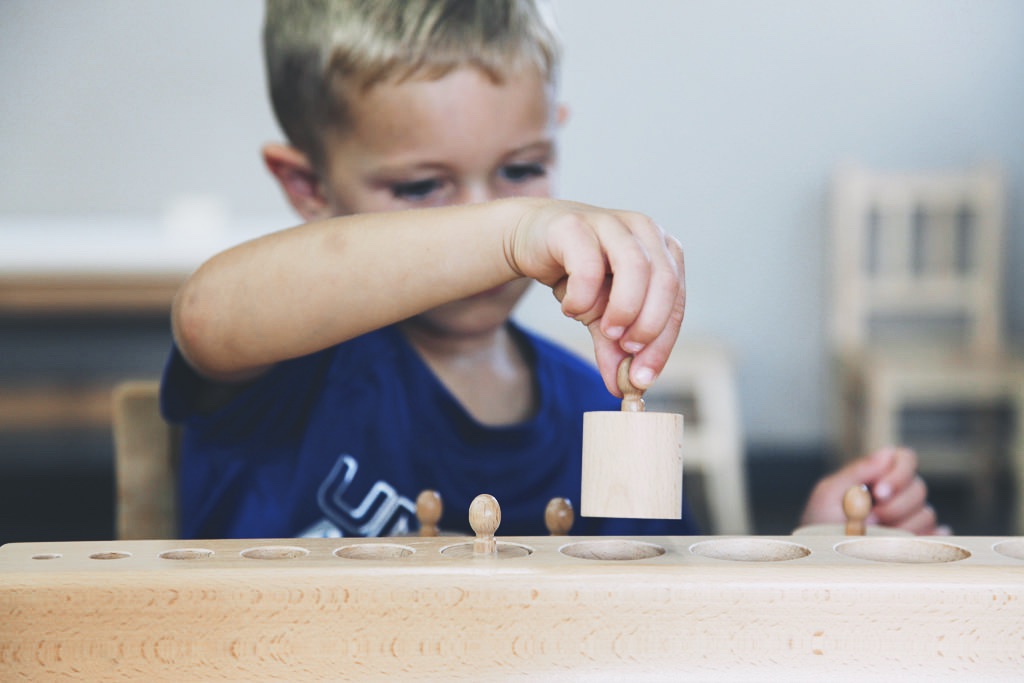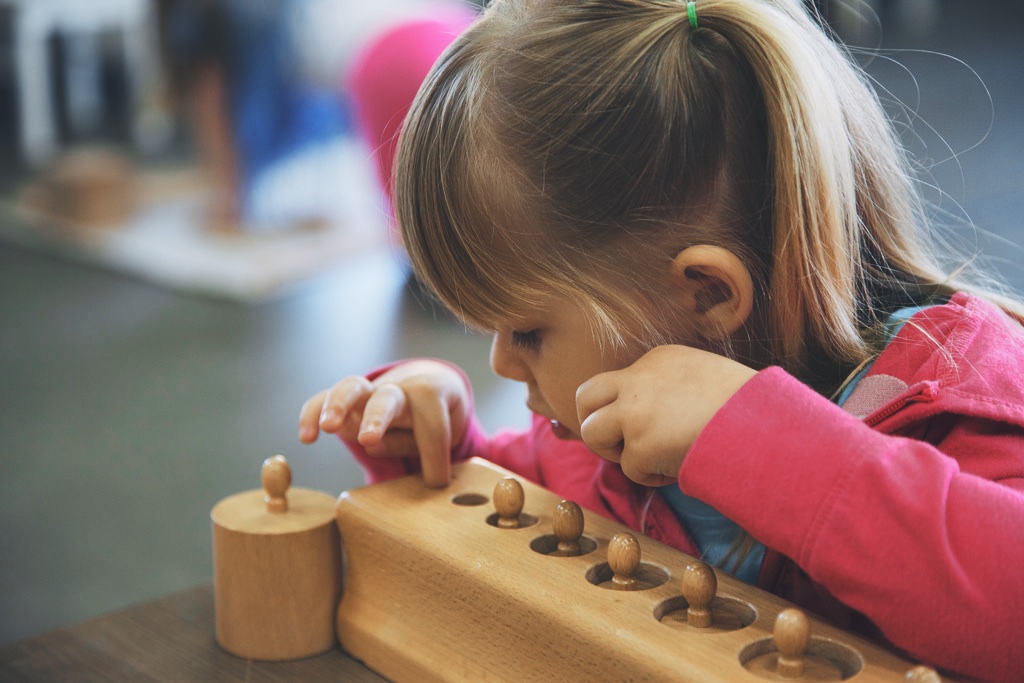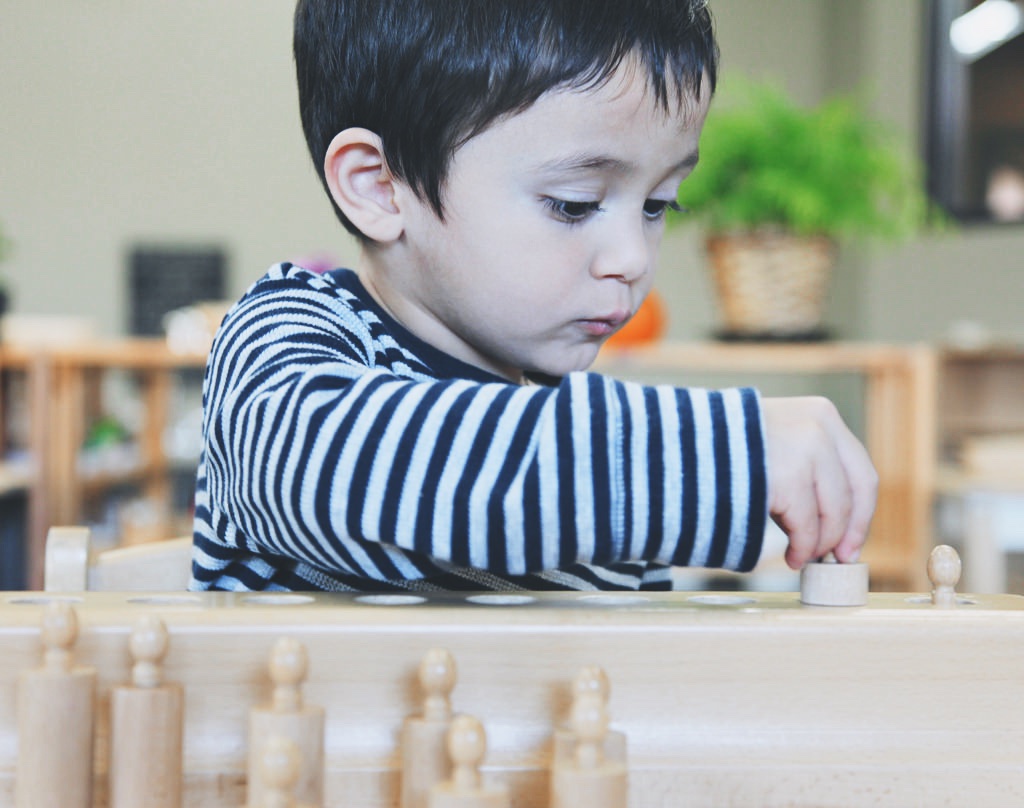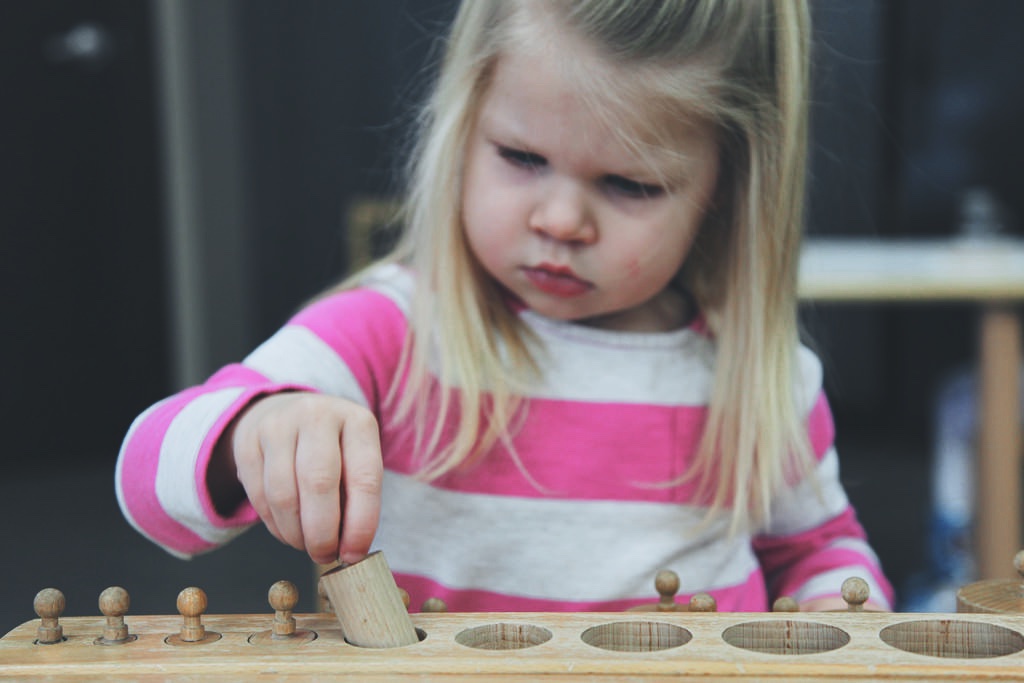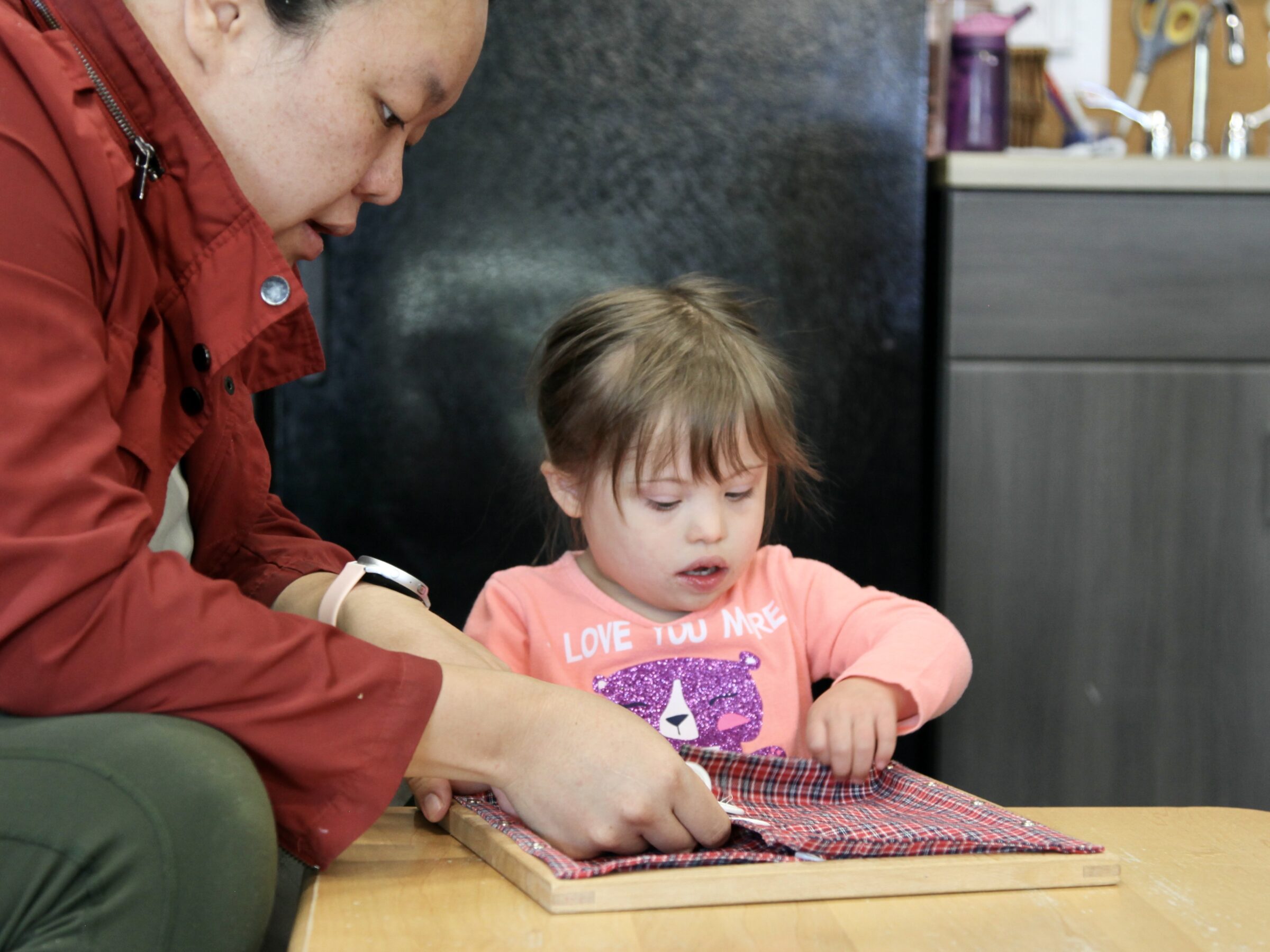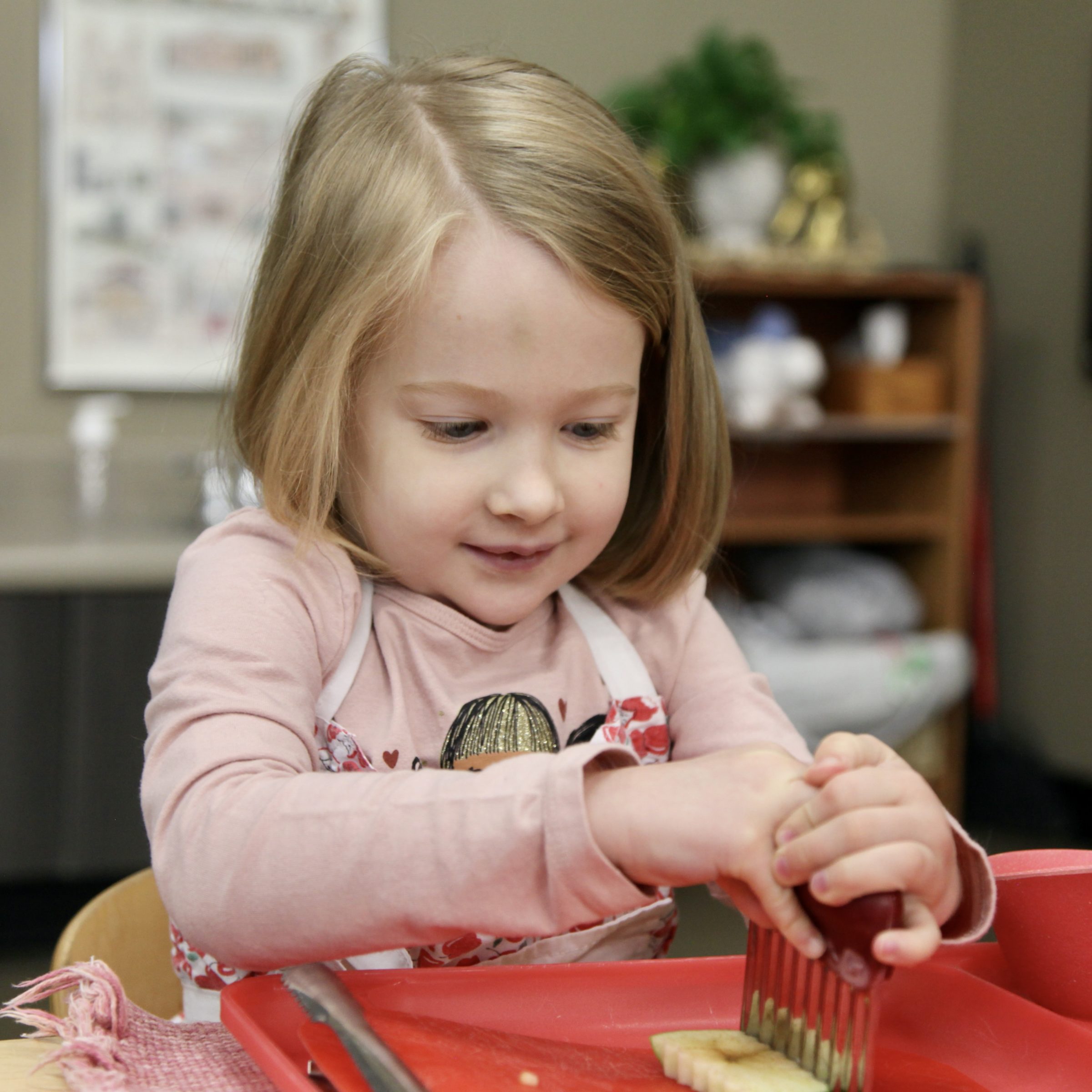Self-Teaching and Self-Correcting
Montessori Activities
There are lots of common, easily identifiable characteristics of Montessori Materials. We use primarily natural, breakable materials, such as wood, ceramic, metal, and glass. The Montessori Materials are designed to be beautiful and appealing to young children. They are just the right weight, size, and shape to fit easily in a child’s hand.
But did you know there are other, less obvious characteristics common to the Montessori Materials? The Montessori Materials are designed to be self-teaching and self-correcting. It is almost as if they call out to you to use them in the appropriate way, use them in the way that teaches the intended lesson. The materials are the teacher in the classroom, not the adult.
The Cylinder Blocks highlight both these qualities nicely. Let’s explore them.
When we’re giving tours to prospective parents, when we approach the Sensorial Area, it is not uncommon for an adult to reach out and grasp the cylinder by the knob, just the way we would show a child. When a new child enters the classroom, it is even more common for them to pull each cylinder out of its aperture and examine it. Even without a presentation, the material tells you what to do with it.
The Cylinder Blocks are indirectly preparing the hand for handwriting. Grasping the knob trains the hand for picking up a pencil. Due to the careful design and the appealing nature of the materials, no verbal instruction, or even modeling, is required. The material self-teaches.
The Cylinder Blocks are also a fantastic example of self-correction.
When the four Cylinder Blocks are sitting on the shelf, each piece is where it belongs. Each Cylinder is in its hole, flush with the surface of the block. Each one fits exactly, with no space around.
When a child is learning to use the Cylinder Block, it’s expected they won’t put all the pieces back in the right spot right away.
“The materials are the teacher in the classroom, not the adult.”
This is where self-correction comes up. When the pieces don’t all fit, when one is too tall and one falls down inside the block, when you put the pieces back and you have one left over, you don’t need to ask me if you did it right. When you get all the pieces back where they belong, you don’t need to ask me if you did it right. You can see when it’s right, and when the pieces need some adjustment.
This is not to say that fixing the problem is easy. If it were easy, the child wouldn’t be learning anything. The child might not even be able to fix the problem herself. But she can identify something is wrong. She has the confidence and the tenacity to struggle with the material, and to try and master it herself. She knows how and who to ask for help.
Not only is the child learning how to master the Cylinder Block, and indirectly how to hold a pencil, but also he is learning all this internal skills. How to struggle with something just a bit longer. When you’re in over your head and you need help. How to ask for help. Willingness to make mistakes, to take risks, because that’s when the learning happens.
Who could imagine something so small was teaching such great life lessons?
Written by:
Charlotte Snyder
